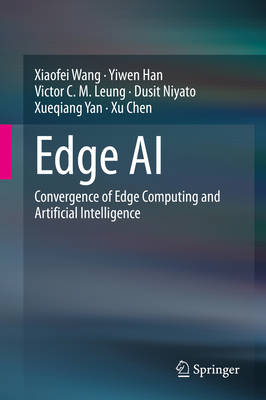
- Afhalen na 1 uur in een winkel met voorraad
- Gratis thuislevering in België vanaf € 30
- Ruim aanbod met 7 miljoen producten
- Afhalen na 1 uur in een winkel met voorraad
- Gratis thuislevering in België vanaf € 30
- Ruim aanbod met 7 miljoen producten
Zoeken
Edge AI
Convergence of Edge Computing and Artificial Intelligence
Xiaofei Wang, Yiwen Han, Victor C M Leung, Dusit Niyato, Xueqiang Yan, Xu Chen
Hardcover | Engels
€ 274,95
+ 549 punten
Uitvoering
Omschrijving
As an important enabler for changing people's lives, advances in artificial intelligence (AI)-based applications and services are on the rise, despite being hindered by efficiency and latency issues. By focusing on deep learning as the most representative technique of AI, this book provides a comprehensive overview of how AI services are being applied to the network edge near the data sources, and demonstrates how AI and edge computing can be mutually beneficial. To do so, it introduces and discusses: 1) edge intelligence and intelligent edge; and 2) their implementation methods and enabling technologies, namely AI training and inference in the customized edge computing framework. Gathering essential information previously scattered across the communication, networking, and AI areas, the book can help readers to understand the connections between key enabling technologies, e.g. a) AI applications in edge; b) AI inference in edge; c) AI training for edge; d) edge computing for AI; and e)using AI to optimize edge. After identifying these five aspects, which are essential for the fusion of edge computing and AI, it discusses current challenges and outlines future trends in achieving more pervasive and fine-grained intelligence with the aid of edge computing.
Specificaties
Betrokkenen
- Auteur(s):
- Uitgeverij:
Inhoud
- Aantal bladzijden:
- 149
- Taal:
- Engels
Eigenschappen
- Productcode (EAN):
- 9789811561856
- Verschijningsdatum:
- 1/09/2020
- Uitvoering:
- Hardcover
- Formaat:
- Genaaid
- Afmetingen:
- 152 mm x 226 mm
- Gewicht:
- 385 g

Alleen bij Standaard Boekhandel
+ 549 punten op je klantenkaart van Standaard Boekhandel
Beoordelingen
We publiceren alleen reviews die voldoen aan de voorwaarden voor reviews. Bekijk onze voorwaarden voor reviews.











